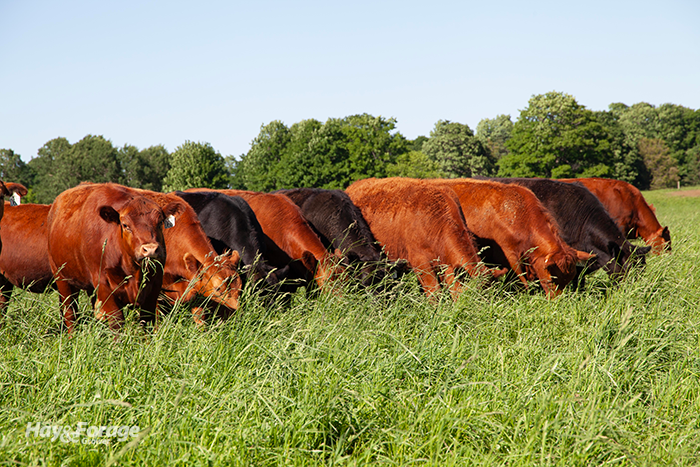
It seems society has become fixated on winners and losers. For better or worse, compromise has become a strategy to be avoided.
For pastures, compromise takes on a different meaning. To compromise a pasture is to keep it from reaching its full productive potential. It seems that nothing can do this faster than an extended stretch of dry weather, and the effects can be long lasting.
Even somewhat moderate droughts make pastures vulnerable to the point where “business as usual” just isn’t good enough. Unfortunately, many pastures become compromised every year because business as usual is employed. This year is no exception based on reports from around the country.
If you’re currently dealing with a compromised pasture, the University of Kentucky’s Chris Teutsch notes that all is not lost, but it might take implementing a few “not so usual” strategies during this fall and the next growing season to make productive winners out of them.
“The saying is that ‘time heals all wounds,’ and this includes pastures,” the extension forage specialist opines. “However, the deeper the wound, the longer it is going to take, and some pastures have pretty deep wounds that may need a little salve.”
Give them time
Teutsch recommends giving pastures a little extra time to recover this fall and during the coming spring, which may call for a slightly extended hay-feeding period. As pastures start to green up next spring, restrict grazing for as long as possible.
“Choose your worst pastures and feed some hay on those, accepting that they will likely need to be reseeded,” Teutsch writes in Kentucky’s Off the Hoof newsletter. “By delaying grazing, you are giving your pastures time to rebuild their photosynthetic factory and store up sugars and carbohydrates before the stress of next summer begins. This also helps to reduce summer annual weeds by allowing cool-season grasses to form a canopy and shade the soil,” he adds.
Sometimes additional pasture soil fertility is needed, and sometimes it is not. If a soil test puts your pastures in the former group, Teutsch reminds us that reduced fertility will impose additional stress on cool-season pastures.
He suggests applying phosphorus and potassium according to a soil test and consider applying 40 to 50 pounds of nitrogen per acre in early spring as grasses begin to grow. Under normal circumstances, spring nitrogen on pastures is discouraged since it tends to stimulate more growth when it’s least needed. However, spring nitrogen can be beneficial for drought-stressed pastures.
If pastures have been thinned by drought and overgrazing, interseeding legumes and/or additional cool-season grasses will bolster production and animal performance. Legumes such as red and white clover will help alleviate nitrogen fertilizer needs, dilute the effect of toxic tall fescue, and improve the protein content of pastures.
Interseeding pastures with perennial cool-season grasses is ideally done in late-summer or early fall. With adequate moisture, the odds for seedling establishment are often improved because thinned, overgrazed pastures offer reduced competition.
Looking ahead
To help fill forage gaps this year or next, Teutsch offers the option of seeding available cropland to annual cool-season cereals or warm-season grasses. “The best time to plant winter annuals is late summer or early fall,” he notes. “Earlier planting will provide more fall or winter grazing if rain isn’t limiting. Planting annuals in early spring could provide some late spring grazing.”
Looking ahead to next year, warm-season summer annuals such as sorghum-sudangrass or sudangrass can provide forage for grazing or harvesting during the summer months. They have rapid emergence and canopy closure. Perennial cool-season grasses can then be reseeded under more ideal conditions in late summer or early fall.
As for next year’s existing pastures or those still recovering from drought, Teutsch reminds farmers that close summer grazing weakens cool-season grasses and creates bare spots, which allows weeds to germinate and become established. He suggests grazing no closer than 4 to 5 inches, especially in dry conditions. “Close the gates and feed a little hay if you have to,” the forage specialist asserts. “This will restrict overgrazing to a small area of the farm.”

